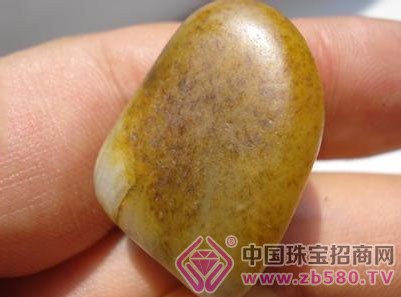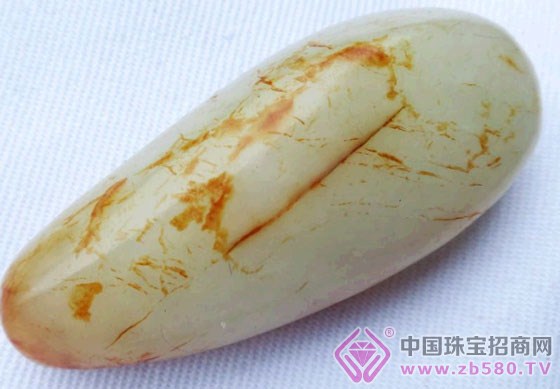When it comes to "Jade Skin", it causes associations. People will carefully observe the surface of jade in the process of appreciation of jade, Jianyu, jade, jade, jade, and gambling. The surface condition of jade is called “skin phaseâ€. For the new and old, good and bad, true and false, etc. of jade, you can understand and distinguish the “pear phaseâ€, so observe and test the process of “skin phaseâ€. The skin of the skin can better appreciate, invest and collect the skinned jade.
What is the skin? "Leather, away from", "peeling," refers to the surface layer of the object, also refers to "surface, superficial". Jade is skinless, and jade is secondary, with jade after jade and jade without jade. The jade skin refers to the connection and indication of the appearance of the jade. We know that Hetian jade has a kind of noble temperament inherent in it, and jade skin can express the connotation, image and beauty of jade, making jade more spiritual. A variety of jade skins like jade wear colorful costumes, unique style. We can compare jade to a book, and jade is the cover and back cover of the book, which is the preface of the book.

The reason why Hetian jade is generated
1. After the formation, other rocks coexisting with them collide and erode each other under geological conditions... The hull attached to the jade is formed in the appearance or crack of the original jade. Such as: Shi Baoyu (璞玉).
2. The original jade is experiencing the effects of glaciers and flowing water, rolling in the riverbed, rubbing, colliding and being affected by the environment to produce jade. Such as: sub-material jade, Gobi beach jade.
3. In the water, in the mud, in the atmosphere, the intrusion of oxides produces "æ²" skin, such as some old jade that is unearthed and effluent.
4. In the processing and carving of jade, the smooth and bright thin jade layer formed by repeated honing, polishing, and "waxing". Such as a variety of finished jade.
5. Because of the long-wearing, juggling, and panning of jade, it is a kind of “pastingâ€, which is a very thin jade skin, such as handed down jade.
The jade shell formed by nature is unpredictable, and the jade skin has no fixed position. Therefore, its "skin phase" is diverse and colorful, so that jade and jade can be viewed from various angles. The jade skin can express jade. , ç‘•ç–µ, 绺 ç¢, ç¢ jade, 磨 jade can also change with the skin, take its essence to its dregs, remove the useless skin such as stupid, dirty skin, dead skin, smear, leave, peel Show meat, tick and keep alive, and do a good job on the jade surface.

Hetian jade skin is divided into four categories
Hetian jade's skin can be divided into four types according to its composition and characteristics, as well as external influences: skin, stone, light and skin:
1. Color leather: There are various colors of jade skin. The basic basic colors are white, yellow, blue, blue and black. The interaction between basic colors and the color of jade inside and outside (including ochre) will also bring a variety of different colors. Such as two-color, multi-color jade skin, can also form a single layer of skin color or multi-layer skin color. At the same time, the color of jade skin will change in natural differentiation. The various specific names for jade color are not customized in the jade world. They are called with the image color closest to the reality of some objects, which is convenient for communication and use. It takes a long time to talk about it. Such as Hetian jade sprinkled gold skin, sugar skin, autumn pear skin, crow skin, tiger skin and other jade skin. The color skin is generally thin, and the color skin has various shapes, and can be formed into an irregular or flat shape, or a sheet shape, a strip shape, or a dot shape. In ancient times, the skin color of Hetian jade was very important. The skin color was not only a symbol of the quality of the variety, but also an idea of ​​ideology.
The five basic skin colors are used for orientation and ritual distribution: cyan (green dragon) is east, white (white tiger) is west, red (suzaku) is south, black (basal) is north, and yellow is central. On the good skin color jade, it is the beauty of the heavens, and its "show" spirit is extraordinary, people are unobstructed and admire. The winner is not called jade, but is called the treasure.
2. Stone skin: refers to the surface of the jade wrapped in the outer surface of the jade, attached to the surface of the jade, full or partially wrapped, thick and thin, this stone is a jade, is a jade stone, the boundaries of its jade and stone Clear and detachable.
3. Light skin: The surface of jade is honed and polished, and the skin is thin.
4. Peel: pulping.

Hetian jade can also be divided into the following categories from different angles:
First, the skin and the skin
1. Jingpi: It is a kind of landscape that is made up of various shapes and shapes of jade stone skin and color skin, or landscapes, or characters, or characters, or lines. Jingpi highlights the aura of beauty jade, adds its cultural connotation, enhances the interest of people to appreciate jade, greatly increases the added value of jade, gives the artist full creative space, and also gives people colorful artistic enjoyment and promotes people. Purchase and collection of jade.
2. Supi: The surface of the jade is more monotonous and has no image.
Second, his color skin and self-color skin
1. His color skin: refers to the jade skin color is inconsistent with its own inherent color (powder color).
2. White leather: refers to the jade skin color is consistent with its own natural color.
Third, raw and cooked skin
1. Raw hide: It is the pit of jade formed by the jade people.
2. Cooked skin: It is the jade skin that is produced after the jade is unearthed.
Fourth, live skin and dead skin
1. Live skin: It is good for playing, appreciating, and conducive to jade carving.
2. Dead skin: refers to the skin of rigid, dirty, weathered, and unmarked value.
Five, fine skin and rough skin
1. Fine skin: smooth leather surface, thin and solid skin, delicate, warm and oily.
2. Rough skin: rough skin, stone, gravel, low transparency and hardness.
Six, the sun-faced jade skin and the gray-faced jade skin
1. Sun-faced jade: The surface of the jade is good (or white and bright).
2. Gloomy jade skin: jade skin on the surface of poor jade (or blackish gray and dark parts).
Seven, leather and fake leather
Snapback Cap,Snapback Hats,Custom Snapback,Custom Snapback Caps
Dongyang City Feilong Cap Co., Ltd. , https://www.zjflcaps.com